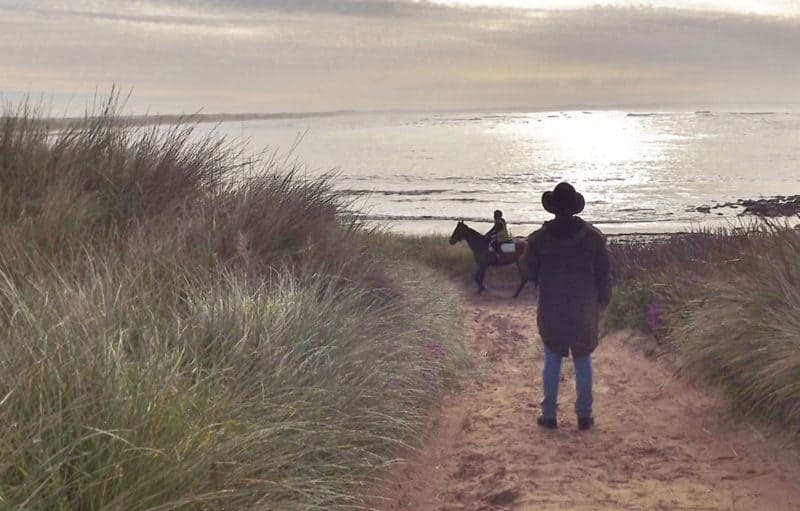What should be the role of the Australian Government in the management of our national parks and reserves?
We know national parks and conservation areas are popular. Statewide polling consistently reaffirms public support for a comprehensive network of national parks and conservation areas across land and sea.
So you would think with these high levels of support it should be an opportunity for politicians of any party or jurisdiction to talk about something different and positive to a fairly jaded electorate.
The Australian Government manages and provides funding for national parks in territories and offshore. Places like Kakadu, Uluru, and the Great Barrier Reef are responsibilities of the Commonwealth, though some parts may be joint managed with territories, adjoining states and Traditional Owners.
National parks in the states are the responsibility of the state, though areas with World Heritage or National Heritage status may get financial support, and some national oversight in limited cases. Roughly 70 per cent of national parks and other publicly-owned protected areas (IUCN Category I-IV) in Australia are in the states.
So while called national parks, they are really creatures and creations of state government. This is not uncommon in the history of the Australian federation – most train lines didn’t match up at state borders until recently.
The internationally significant wetlands and Red Gum flooded forest areas of Barmah National Park. Photo: Keith Ward | Parks Victoria
The federal government has signed up to the International Convention on Biological Diversity (CBD), giving it a legal role in the oversight and support of management of national parks and conservation areas. We’re not talking about a ‘take over’ from the federal government of state territories. But there is a legitimate role for the Australian Government to help manage, or incentivise states to better manage, our unique natural heritage on behalf of all of us.
VNPA and other national parks associations around the country, as well as community conservation groups, have developed a package of policy proposals through the National Parks Australia Council (NPAC) that explore opportunities for the Australian Government to protect our national natural heritage estate.
NPAC has a series of background briefings and discussion papers on some of these key areas. They include:
- National parks – a matter of national significance
- Maintain the values of the national reserve system
- Completing Australia’s national reserve system
- Enhancing landscape connectivity
- Marine protected areas
We want to see improved federal funding through programs such as the National Reserves System Program (NRSP). This program is currently not funded nationally. Programs such as this need renewed long-term funding, to both fill gaps in the reserve system, and to incentivise better management.
This could spur the creation of a connected and expanded wildlife corridor network by utilising the public and private reserve system.
Barmah National Park,Yorta Yorta Country. Photo: Peter| Flickr.com
What is a ‘national parks trigger’?
In 2018, the federal ALP announced that if elected, a “Shorten Labor Government will ensure the federal government returns to taking leadership role in protecting our natural environment by creating an Australian Environment Act, and establishing a Federal Environmental Protection Agency”. This followed on from commitments made by the ALP to look at the idea of an EPBC Act trigger in 2013 election, which they lost.
The 2018 commitment was welcomed by many in the conservation world. A long-running campaign by the Places You Love Alliance (a national alliance of 54 environment groups, including VNPA) wanted this commitment to go further, but it is a start.
In the detail of their National Platform 2018, the Labor Party then set out priorities to create new climate, land clearing and water triggers in the reform of our national environmental laws. This was shown in the wording that “Labor will also consider a National Parks trigger to protect Australia’s system of National Parks”, and “Labor will protect Australia’s biological diversity through a national system of comprehensive adequate and representative parks and reserves, while using education, regulation and incentives to achieve ecologically sustainable use elsewhere in the landscape”.
Some positive sounding noises – but what should they be looking at in concrete terms? The idea for our national environment laws (the Environment Protection and Biodiversity Conservation Act 1999) to have a ‘trigger’ for the federal environment minister to assess and put conditions on inappropriate actions in national parks first came up following the last round of the alpine cattle grazing dispute between 2010-2014.
The then federal environment minister Tony Burke intervened in the dispute after the state government tried to introduce cattle back into the Alpine National Park under the guise of a flawed scientific trial.
Essentially, the logic goes, the Australian Government has international obligations to protect the integrity of national parks. But the question remains – what can it do if a state government goes feral and wants to damage, develop or destroy national parks? To date, not much.
A version of this article written by Executive Director Matt Ruchel originally appeared in PARK WATCH March 2019.
- Read the latest full edition of Park Watch magazine
- Subscribe to keep up-to-date about this and other nature issues in Victoria
- Become a member to receive Park Watch magazine in print


